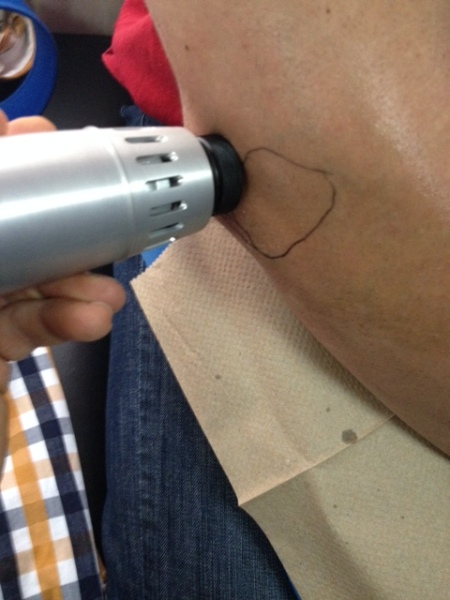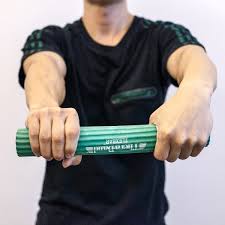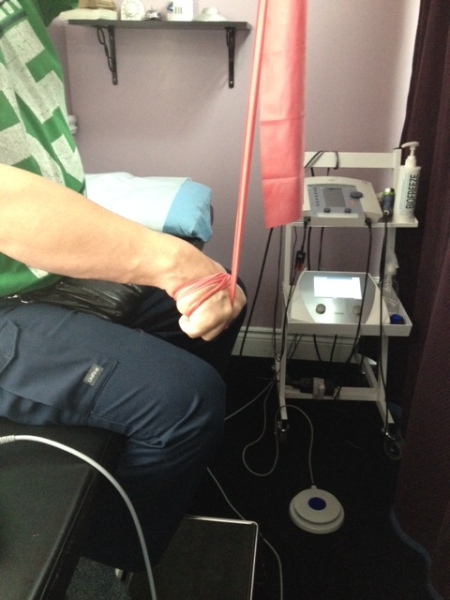Lateral epicondylosis is considered a degenerative process. Its prevalence is about 1 to 3% in general population ages 45 to 54 years. It is no longer regarded as an inflammatory process due to lack of inflammatory markers. It is now better known as angiofibroblastic degeneration or hyperplasia within extensor tendon. Treatments include “wait and see”, rest, bracing, activity modification, NSAIDs, local injections or surgical intervention; open, percutaneous, or arthoscopic release of extensor origin debridement. (Arik et al, 2014).
As a practitioner we all know that tennis elbow is a stubborn condition to treat. The case below depicts a difficult case treated at our clinic using physical modalities, mobilizations and exercise to treat a very stubborn bilateral lateral epicondylosis. The involved patient is a middle age male with a muscular built that has been having bilateral elbow pain since 2012 with insidious onset. In 2013 he went through 25 session of physiotherapy that included muscle stimulation and class 3 laser. From May to June of 2013 he had 4 sessions of ultrasound guided Dextrose injection. This procedure exacerbated his condition. In June and September 2014 he had steroid injections in both elbows with little relief. He found our clinic online looking for class 4 laser. Somehow he had never heard of shockwave therapy.
During examination full elbow ROM was noted. Tender points were found in both lateral epicondyle and extensors of the wrist. Treatments included prescription of elbow brace bilaterally. Patient was recommend to wear the brace at all times including during sleeping. Zimmer enPlus Radial Shockwave was used with 2000 shocks at 10 Hz, at 120-185 mJ with 25mm applicator head on the extensors and 60 mJ, 1000 shocks at 10 Hz with 15mm applicator around the lateral epicondyle for 6 sessions in 10 days. Apollo Class 4 Laser with 3000 mW of power for 2 min producing 350 Joules was used immediately after shockwave directly over the epicondyles. This was followed by later chiropractic adjustments of the elbow joint as well as Red Theraband and Theraband Flexibar exercises concentrating on eccentric loading.
The Upper Extremity Function Scale score was recorded at the initial exam at 31/80 and post treatment at 16/80 indicating 20% improvement in 6 sessions. Patient reported that he felt significant improvement. He no longer feels much pain in his left elbow. His right elbow also feels much better. He has returned to work as a truck driver which requires frequent upper extremity and elbow utilization while changing of gears. He also reported that he now has “hope” once again.
Also Read
| Case Study: Subacute Neck Pain Simply | Case Study: Acute Lower Back Pain | Case Study: Subacute Lower Back Pain |
| Case Study: Chronic Lower Back Pain | Case Study: Lumbar Spinal Stenosis | Case Study: Right lateral disc protrusion at L5-S1 |
| Degenerative Disc Disease (Intervertebral Disc Pain) |



